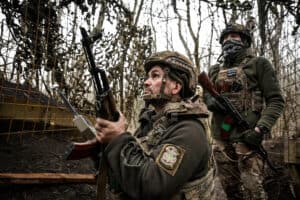The body of Kremlin critic Alexei Navalny is apparently not in the morgue where prison authorities said it was being kept.

Russia’s top opposition politician Alexei Navalny died on Friday. 16 February at the Arctic prison colony where he was serving a 19-year term.
Here is what we know so far about the death of the 47-year-old head of the Anti-Corruption Foundation and outspoken critic of President Vladimir Putin:
Alexei Navalny died ‘after a walk’
Russia’s federal penitentiary service said Navalny, already the target of a poisoning attack before he went to jail, fell ill after going for a walk.
“Navalny felt bad after a walk, almost immediately losing consciousness. Medical staff arrived immediately and an ambulance team was called,” the prison service said in a statement.
“Resuscitation measures were carried out that did not yield positive results. Paramedics confirmed the death of the convict. The causes of death are being established,” it added.
Russian news agencies reported that medics from a nearby hospital were called seven minutes later and spent half an hour trying to resuscitate Navalny.

Russia’s Investigative Committee said it had opened an investigation into the death.
A lawyer for Navalny and a regional court said he had actively participated in a video legal hearing on Thursday, the day before he died, when he did not appear to have any health complaints.
Russian state television briefly reported Navalny’s death.
Lawyers not told
Navalny’s defence team said they had not been informed of his death but that a lawyer was going to the remote Kharp prison in the Arctic region to find out what happened.
Prison authorities did confirm Navalny’s death to his mother, Lyudmila, but she and his lawyer were refused access to his body after arriving in the region of the remote prison colony where he had been held, Navalny’s spokeswoman Kira Yarmysh said.
And Navalny’s team said on social media on Saturday that his body is apparently not in the morgue where prison authorities said it was being kept.
“It’s obvious that the killers want to cover their tracks and are therefore not handing over Alexei’s body, hiding it even from his mother,” Navalny’s team said in a post on Telegram.
ALSO READ: Young Russians voice fear, disbelief over Navalny death
International outrage
Western governments have been quick to blame the Kremlin.
“Make no mistake, Putin is responsible for Navalny’s death,” US President Joe Biden said.
“The Russian government bears a heavy responsibility,” Norway’s Foreign Minister Espen Barth Eide wrote on X, formerly Twitter.
Italian Prime Minister Giorgia Meloni said Navalny’s death was a “warning” to the world.
G7 foreign ministers meeting on Saturday in Munich held a minute’s silence.
China’s foreign ministry declined to comment, saying it was “Russia’s internal affair”.
Spontaneous gatherings occurred outside Russian embassies in capitals across Europe, with protesters blaming Putin for his death.
In Moscow, Russian police on Saturday detained people who had come to lay flowers at a monument in Moscow for victims of Soviet repression, according to AFP reporters and independent media.

Navalny moved to notorious penal colony
Navalny had been detained in Russia since January 2021 when he was sentenced to a prison colony for “extremism”. That term was extended to 19 years in August last year.
It was just the latest in a string of jail terms for charges that included embezzlement.
He had spent most of his detention at the IK-6 penal colony in the Vladimir region, some 250km east of Moscow.
In December, he disappeared for more than two weeks. At the end of that month it was revealed that he had been moved to the notorious IK-3 colony at Kharp in the Arctic.
Navalny said on social media on 26 December that he was “fine” after a “pretty exhausting” 20-day transfer to the remote prison inside the Arctic Circle.
IK-3 is more than 1 900km northeast of Moscow. Its name means Northern Lights, but its nickname is “Polar Wolf”.
It was built in the 1960s on the site of a camp that was part of the Stalin-era labour camp network, known as the Gulag. It can house up to 1 020 prisoners. Inmates are put to work treating reindeer skins.
Poison before prison
Navalny mobilised huge anti-government protests before being jailed in 2021, after surviving an attempt to assassinate him by poisoning.

Starting out as an anti-corruption campaigner in 2007, Navalny led huge protests in 2011-2012 and received his first conviction in 2013 for embezzlement. He denied the charges.
After being barred from the 2018 presidential election, Navalny was admitted to hospital in Siberia in August 2020 after losing consciousness during a flight.
He was transferred to a Berlin hospital where tests showed he was poisoned with Novichok, a Soviet-era nerve agent. Navalny blamed Putin for the poisoning. The Kremlin denied the accusation.
NOW READ: From poisoning to penal colony: The Navalny affair
— By © Agence France-Presse






